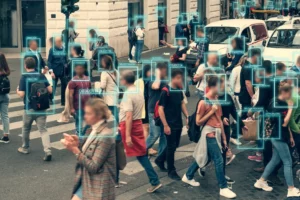Security threats are a major concern for everyone in today’s interconnected world, but for those of you with substantial wealth: high-net-worth individuals (HNWIs), the risks are even more severe. You are unique targets, not just because of your wealth, but also due to your high-profile status in society.
Your lifestyle, influence, and assets make you attractive for a variety of threats. From cybersecurity issues that could compromise your personal and financial data to physical threats to your safety and well-being, the challenges you face are complex and multifaceted.

Think about this: when you’re a person of significant means, even simple tasks, such as accessing your email or taking a walk, can pose a risk. A potential hacker isn’t just looking at your email; they’re looking at a gateway into your financial world. A passerby isn’t always just a passerby; they could be someone with malicious intent.
But, it’s not just the outside world you need to worry about. Sometimes, threats can come from within your inner circle. An unscrupulous employee, an acquaintance with less than noble intentions, the risks are plenty and often hard to foresee.
This article will delve into the top security threats that you, as HNWIs, face in the current climate. We’ll explore these risks with real-life examples and case studies, shedding light on the severity of these, and more importantly, providing insights into how you can better protect yourself.
The security threats facing High-Net-Worth individuals
Cybersecurity Threats

Imagine waking up one day to find that your digital assets are no longer under your control. Your emails are inaccessible, your bank accounts show transactions you didn’t authorize, and even your social media platforms are compromised. It’s a nightmare, isn’t it? This is the world of cybersecurity threats, a universe that continually evolves to exploit vulnerabilities and breach defenses.
Phishing Attacks
Phishing, a type of online scam, is where you, or someone you trust, are tricked into revealing sensitive data, such as usernames, passwords, or credit card numbers. The scammer usually impersonates a legitimate company or service through convincingly designed emails or texts.
One recent case that garnered media attention involved Barbara Corcoran, a well-known investor from the TV show “Shark Tank.” Corcoran lost nearly $400,000 in February 2020 due to a phishing scam where an email appeared to come from her assistant. Fortunately, she was able to recover her money, but many others aren’t as lucky.
Ransomware Attacks
You may have heard of the term ‘ransomware.’ It’s a malicious software that encrypts your files, making them inaccessible, then demands a ransom, usually in cryptocurrency, for their release.
The 2017 WannaCry ransomware attack is a stark example. Though not targeted at HNWIs specifically, it affected organizations globally, including the UK’s National Health Service. Imagine a similar situation, but this time your personal files are at stake. A grim picture, right?
Malware and Spyware
Malware is a generic term for malicious software, while spyware is a type of malware that spies on you, tracking your activities without your consent. They can record your keystrokes, capture screenshots, and even access your webcam, all without your knowledge.
In 2019, Jeff Bezos, the founder of Amazon, had his phone hacked. It’s believed that malware was delivered to Bezos’s phone through a video sent via WhatsApp from an account linked to the Saudi Crown Prince. This led to a significant breach of personal data.
To shield yourself from these, a robust cybersecurity protocol is essential. This could include:
- Regularly updating your software to the latest versions as they often include security patches for known vulnerabilities.
- Using strong, unique passwords for each of your online accounts.
- Installing a reliable security suite that offers protection against various types of malware.
- Regularly backing up your data to a separate location. This can be a lifesaver if you’re hit by a ransomware attack.
- Increasing your vigilance, especially with unsolicited emails or messages, and never clicking on links or attachments from unknown sources.
Cyber threats are today’s reality, and they aren’t going away anytime soon. The key lies in being proactive, staying updated about the latest threats, and taking the necessary steps to safeguard your digital assets.
Physical Security Threats

With your wealth and status, the risk of you becoming a target for physical security threats significantly increases:
Personal Safety Threats
Personal safety threats can range from stalking and harassment to kidnapping and physical harm. Often, the motive behind such threats is financial gain, revenge, or public notoriety.
A chilling example is the case of the billionaire heiress Patty Hearst, who was kidnapped in 1974 by the Symbionese Liberation Army. While this is an extreme case, it’s a stark reminder of the lengths some will go to exploit your wealth and influence.
Home invasions and robberies
Your residences may become targets due to their perceived value. High-profile robberies are not uncommon, and criminals often spend a considerable amount of time planning them.
Travel security threats
Whether you’re traveling for business or leisure, unfamiliar environments can pose a heightened security risk.
Now, the question arises: what can you do to mitigate these risks? Here are some suggestions:
- Implement robust home security measures, including surveillance systems, alarm systems, and employing security personnel if necessary.
- Keep your travel plans confidential to minimize the risk of being targeted when you’re away from home.
- Limit the information you share on social media. Posting real-time updates about your location and activities can provide criminals with valuable information.
- Engage a reputable security firm that can provide risk assessments and personal security services. This can be particularly useful if you’re traveling to high-risk locations.
- Have a crisis management plan in place. Knowing how to respond during a security incident can make a significant difference to the outcome.
Your physical safety is paramount. Therefore, being aware of these and implementing suitable countermeasures can help ensure that you and your family can enjoy the lifestyle you’ve worked so hard to attain, without constant worry about potential threats.
Financial Fraud
While the digital world has revolutionized how we manage our finances, it has also given rise to new forms of financial fraud. Being a person of wealth, you might find yourself at the receiving end of these activities more often than not.
Identity Theft
Identity theft involves someone stealing your personal information to impersonate you, often with the goal of financial gain. This can lead to unauthorized transactions, opening of new credit lines, or even criminal charges in your name.
Investment Scams
With wealth comes an interest in high-return investments, and unfortunately, the unscrupulous are well aware of this. Pyramid schemes, Ponzi schemes, and other investment scams are frequently targeted at the wealthy.
The infamous Bernie Madoff investment scandal is a prime example. Madoff defrauded thousands of investors, many of whom were HNWIs, out of billions of dollars through his elaborate Ponzi scheme.
Wire Transfer Fraud
In this type of fraud, criminals trick you into wiring money to them. They usually pose as a trusted individual or organization, such as a family member, business partner, or even a charity.
So, how can you protect yourself from these risks?
- Regularly review your financial statements for any unauthorized activity.
- Be cautious with unsolicited investment opportunities, particularly those promising unusually high returns.
- Safeguard your personal information. Never share sensitive data through email or over the phone unless you’re confident about the recipient’s identity.
- Use two-factor authentication for your financial accounts. This provides an additional layer of security.
- Regularly check your credit report for any suspicious activities or inquiries.
Social Engineering

In your position of influence, you may often find yourself interacting with various individuals and organizations. This, unfortunately, also opens up the possibility of social engineering threats– the art of manipulating people to give up confidential information or perform actions that may not be in their best interest.
Impersonation
Impersonation is a common social engineering technique. The perpetrator might pose as a trusted individual, such as a business associate, family member, or a staff member of a financial institution, to trick you into revealing sensitive information or authorizing harmful actions.
One notable example is the 2019 Twitter CEO Jack Dorsey’s SIM swap attack. In this incident, attackers posed as Dorsey, convinced his mobile carrier’s customer support to transfer his phone number to their device, and then used it to send offensive tweets from Dorsey’s account.
Baiting
Baiting involves offering something enticing to an individual, often a digital asset like a music or movie file, in exchange for private data. Once the person bites, they can find their systems infected with malware or their data compromised.
Pretexting
Pretexting is when an attacker fabricates a scenario (the pretext) to steal the victim’s personal information. They might pretend to need certain details to confirm your identity, to help you with a problem, or to comply with a legal requirement.
Here are a few protective measures:
- Always verify the identity of the person you’re dealing with, especially when they request confidential information.
- Be cautious of unsolicited offers that seem too good to be true.
- Provide personal information only through secure and official channels.
- Implement a robust security awareness training program for your staff and family members. This can go a long way in preventing such attacks.
Threats from insiders
While most security threats seem to come from external sources, sometimes danger lurks much closer to home, such as from employees, contractors, or even family members, who have authorized access to your personal or business assets.
Employee Misconduct
Employees with malicious intent or who are simply careless with your information can pose a significant risk. They may misuse access privileges, mishandle sensitive data, or even siphon off funds.
Family Disputes
Disputes within families, particularly those surrounding inheritance and wealth distribution, can sometimes lead to security threats. Family members with knowledge of your assets and vulnerabilities could potentially misuse this information.
Business Partner Deception
Business partners, owing to their access to key financial and strategic information, could pose a significant threat if they decide to act against your interests.
To protect yourself from insider threats, consider these measures:
- Conduct thorough background checks before hiring employees or entering into business relationships.
- Implement a clear policy outlining acceptable use of company assets and handling of sensitive information.
- Maintain a need-to-know principle when it comes to access to sensitive data.
- Have legal agreements in place that protect your interests when dealing with partners or family members.
Final Thoughts

Being a high-net-worth individual undoubtedly comes with numerous perks, but it also brings a unique set of security challenges. From cybersecurity threats and physical security risks to financial fraud, social engineering attacks, and insider threats, you may find yourself a target from multiple angles.
However, these challenges shouldn’t overshadow the enjoyment of your success. By understanding the risks and proactively implementing countermeasures, you can significantly reduce them. Here’s a brief recap of the protective measures discussed:
- Enhance your cybersecurity infrastructure and maintain robust online practices.
- Implement thorough physical security measures at your residence and while traveling.
- Regularly monitor your financial statements and be wary of unsolicited investment opportunities.
- Be cautious when dealing with unsolicited offers and always verify the identity of those requesting sensitive information.
- Conduct background checks on employees and business partners, and maintain clear policies regarding sensitive information.
It’s important to cultivate a culture of security within your environment. This includes family members, employees, and associates alike, as it is through this collective vigilance that your wealth and safety can be best protected.
Your security is a continuous journey, not a destination. By staying aware, being proactive, and seeking professional advice when necessary, you can ensure that you are well-prepared to face any security threat that comes your way.

